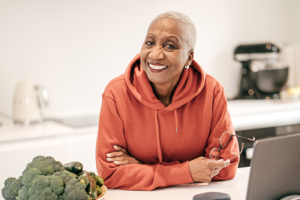Creating a Safe Environment for Those Who Have Experienced a Stroke
 According to the National Stroke Association, there are several tips and tricks to making a house more accessible for those who have experienced a stroke.
According to the National Stroke Association, there are several tips and tricks to making a house more accessible for those who have experienced a stroke.
Forty percent of stroke survivors suffer serious falls within a year after their strokes.
To Avoid Falls
- Clear paths to the kitchen, bedroom and bathroom
- Move electrical cords out of pathways
- Wear non-skid shoes and avoid slick surfaces
- Remove loose carpets and runners in hallways and stairwells or fasten them with non-skid tape to improve traction
- Replace thick carpeting with lower pile carpeting to make wheelchair or walker movement easier
- Install handrails for support in going up and down stairs and check to make sure they’re securely fastened to the wall
- Consider stair glides, stair lifts and platform lifts if stairs are required
Doing Laundry Will Be Less Challenging With a Few Simple Changes
- Stackable, front-loading machines may be easier to reach and take up less space
- Move laundry machines to a place where they are easily accessible
- Use easy-to-reach, labeled detergents and laundry supplies
- Have easy-to-read markings for wash settings
- Use a nearby table or cart at the right height for sorting and folding
- Use an ironing board that folds down from the wall
Special Utensils Help People With Physically-Impaired Arms and Hands at the Table
- Attachable rings which keep food from being pushed off the plate accidentally
- Flatware with built-up handles which are easier to grasp
- Rocker knives for cutting food with one hand
Making the Bedroom Safe and Comfortable
- Move/reorganize clothes and personal items to make them easier to access
- Use a nightlight and clear a path for easy access to the toilet at night
- Consider placing disposable “blue pads” underneath the sheets
- Keep a commode chair near the bed
- Install a light switch near the bed
Adjusting to Challenges in the Kitchen
- Adjust the kitchen table so it is the right height for a wheelchair or for a chair with arms that supports posture
- Mount an over-the-stove mirror to help see stovetop contents if cooking while seated
- Keep a clear space near the stove to place a hot pot or pan quickly
- If possible, use a stove with push-button controls at the front
- Install automatic shut-off controls
- Keep a fire extinguisher nearby
- Have oven mitts on hand
Helpful Bathroom Devices
- One-piece faucet with lever handles or long extensions, allowing water to be turned on and off with a fist or arm movement
- Cut-out or roll-under sink, which allows room for legs underneath the sink while seated
- Suction pads to hold grooming tools or bottles in place on a counter, requiring just one hand to pick up or use
- Easy-to-use water control knobs with easy-to-see settings or long-handled levers
- Non-slip flooring strips installed inside and outside of the tub
- Electric toothbrush and flip-top toothpaste tube
- Grab bars in shower or tub
- Sturdy handrails
- Raised toilet seat or toilet chair
- Adjustable or handheld showerhead
- Bathing supplies that are easy to reach and use
- Long-handled brush
- Squeeze bottles and soap pumps
- Washing mitt with pockets for soap
- Soap-on-a-rope
- Electric razor
- Tub bench
To speak with our experienced home care aides (HCAs) about how to personally create a safe environment for your loved one, contact us today.
Resource: National Stroke Association is the leading national non-profit organization devoting all of its efforts and resources to stroke. NSA provides the most up-to-date information on prevention, treatment, rehabilitation, and support for stroke survivors and their families. For more information on NSA contact 1-888-4-STROKE or visit Stroke.org.
Download a printable version of this page.
